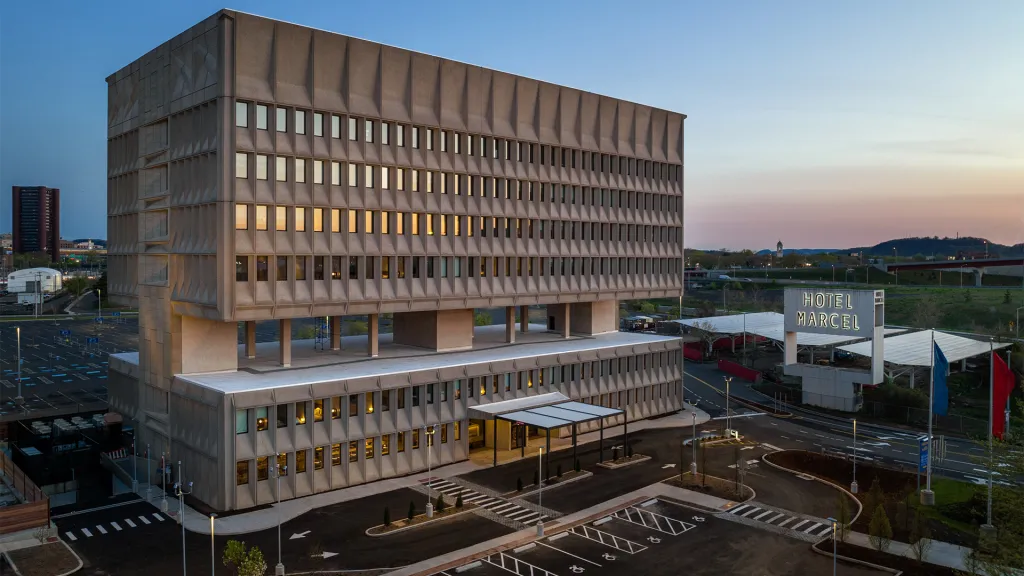Once an Ikea office block, a New Haven, Connecticut building is now Hotel Marcel — a 165-room Hilton that runs entirely on renewable electricity, using two-thirds less energy per guest than the regional average.
Energy is generated by more than 1,000 rooftop and parking canopy solar panels, with the remainder sourced through clean-energy contracts with the local utility. Every major system, from heating and air conditioning to hot water, restaurant kitchens, and laundry, runs on renewable electricity.
“There are a lot of misconceptions about the cost of developing something like this. But I do believe that it is not more expensive if done correctly,” said developer and investor, Bruce Becker.
The Design Decisions Behind the Energy Savings
The project was designed to meet Passive House standards, an energy-efficiency certification that requires buildings to maintain a tight envelope and use minimal energy for heating and cooling.
The project was designed to meet Passive House standards, an energy-efficiency certification that requires buildings to be airtight and use minimal energy for heating and cooling.
Triple-glazed windows, high performance doors, and heavy roof insulation were installed to reduce leaks and energy waste.
While those upgrades came with higher upfront costs, they allowed the hotel to install smaller and cheaper
